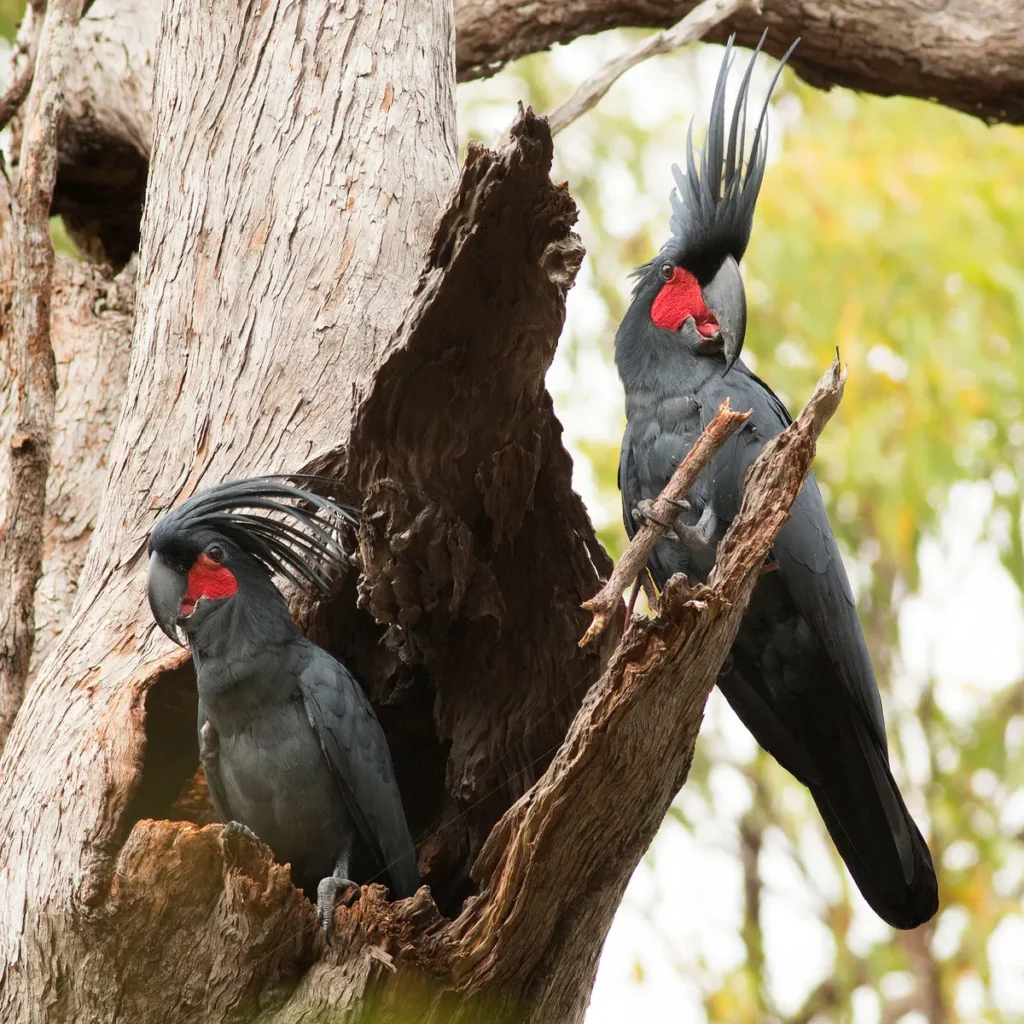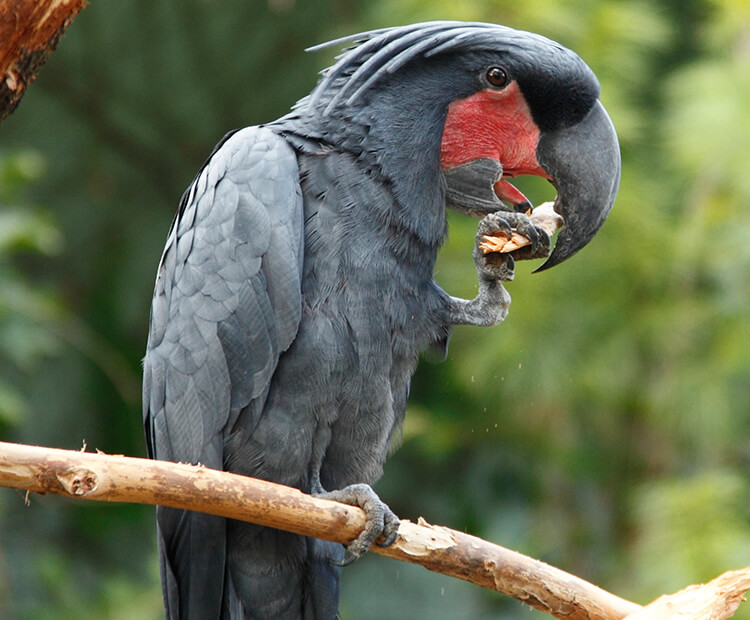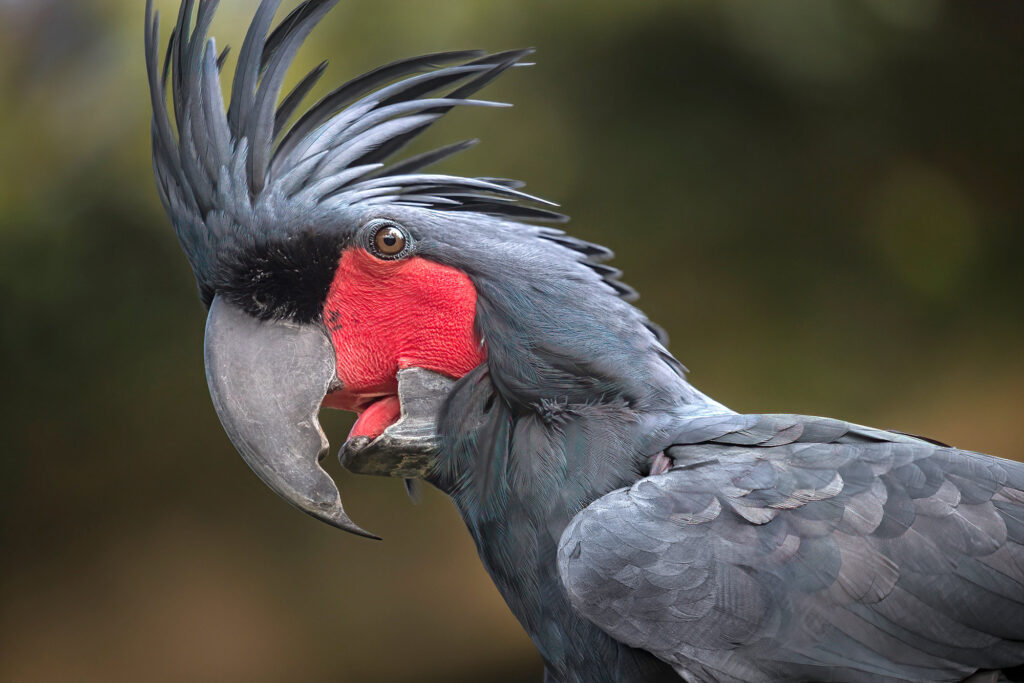Palm Cockatoo |Taxonomy, Habitat, Intelligence, Conservation Status
The Palm Cockatoo (Probosciger aterrimus), also known as the Goliath Cockatoo, is a large and distinctive species of cockatoo native to the rainforests of New Guinea, the Aru Islands, and Cape York Peninsula in Australia. The species was named the “Goliath Aratoo” in Wood’s Natural History (1862). It is also sometimes given the misnomer “black macaw” in aviculture although the macaws are unrelated New World parrots. The Palm Cockatoo is the only recognized species within the Probosciger genus. It is known for its distinctive appearance, large size, and unique features, including a dark plumage, large crest, and bare facial skin patches that can change color based on the bird’s emotional state.

Taxonomy:
- Kingdom: Animalia (Animals)
- Phylum: Chordata (Chordates)
- Subphylum: Vertebrata (Vertebrates)
- Class: Aves (Birds)
- Order: Psittaciformes (Parrots)
- Family: Cacatuidae (Cockatoos)
- Subfamily: Cacatuinae (White Cockatoos)
- Tribe: Microglossini
- Genus: Probosciger
- Species: Probosciger aterrimus
Appearance:
Size: Palm Cockatoos are among the largest species of cockatoos, with an average length of about 55-60 cm (21.5-23.5 inches).
Coloration: They have a dark smoky gray to black plumage with a unique crest of large feathers on their heads.
Facial Skin: One of the most distinctive features is their large, bare facial skin patches, which can change color depending on the bird’s emotional state.
Weight Range: Adult Palm Cockatoos can weigh between 900 grams to 1,200 grams, with males often being larger and heavier than females.
Crest and Beak:
Crest: The crest on the head of the Palm Cockatoo is made up of long, erectile feathers. When excited or agitated, they can raise and fan their crests to display a striking appearance.
Beak: They have a large and powerful beak, which is dark in color and hooked at the tip, adapted for cracking nuts and seeds.

Habitat:
Natural Range: Palm Cockatoos are found in rainforests and woodlands of New Guinea, the Aru Islands, and northern Australia’s Cape York Peninsula.
Nesting: They often nest in tree hollows and lay a single egg.
Behavior:
Intelligence: Palm Cockatoos are known for their high level of intelligence and problem-solving abilities. They are capable of using tools, such as sticks, to extract insects from tree bark.
Communication: Like other cockatoos, they are vocal birds. Their calls are loud and distinctive, and they use vocalizations to communicate with each other.
Diet:
Their natural diet consists of a variety of seeds, nuts, fruits, and insects. They use their strong beaks to crack open hard-shelled nuts and extract the nutritious contents.

Lifespan:
The lifespan of Palm Cockatoos in the wild is not precisely documented, but in captivity, they can live for several decades. In captivity, where they receive proper care and attention, Palm Cockatoos have been known to live up to 50 to 70 years. It’s important to note that the lifespan of birds in the wild may be shorter due to various factors, including predation, diseases, and environmental challenges.
Mating Behavior :
Palm cockatoos are monogamous and pairs stay together for life.
Eggs and Incubation:
Palm Cockatoos usually lay a single egg in a tree hollow or another suitable nesting site.
The incubation period for Palm Cockatoo eggs is typically around 28 to 30 days.
Population :
The International Union for Conservation of Nature (IUCN) lists the Palm Cockatoo as “Least Concern (LC)” on the Red List, indicating that the species is at risk of becoming threatened with extinction in the near future. It is believed to have a stable population of 3,000 individuals.
Conservation Status:
The species is listed as ” Least Concern (LC) ” on the International Union for Conservation of Nature (IUCN) Red List, and conservation efforts are ongoing to protect their habitats.

Cultural Significance:
In some indigenous cultures, the Palm Cockatoo holds cultural significance and may be featured in ceremonies or considered a symbol.
Distinctive Features:
The species possesses a unique and impressive casque, a bony structure on the top of its bill, giving it a distinctive appearance.
Palm Cockatoos are known for their ability to use tools, such as sticks, for various activities, including extracting insects from tree bark.

